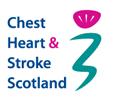All of the breathing control exercises are different depending on which type of altered breathing pattern is identified.
Each child needs an individualised assessment and breathing control treatment plan.
This is just an example of a personal breathing control plan. Each person is different. You can ask your respiratory team if a breathing control plan would help your child. Specialist respiratory nurses and respiratory physiotherapists are usually the ones to work out your child’s individual plan.
| Example of a breathing control plan |
|---|
| You need to do these breathing control exercises regularly. Aim for 5 minutes every hour during the day. |
For the first 2 weeks, lie down.
|
Next once you are familiar with the breathing exercises, remain sitting up
|
| Next, do your breathing control exercises as needed throughout the day. Aim to integrate them into your normal activities. |
If you get worse or relapse … this is usually due to:
Go back to the beginning, lying down and carry out steps 1 – 5. |





